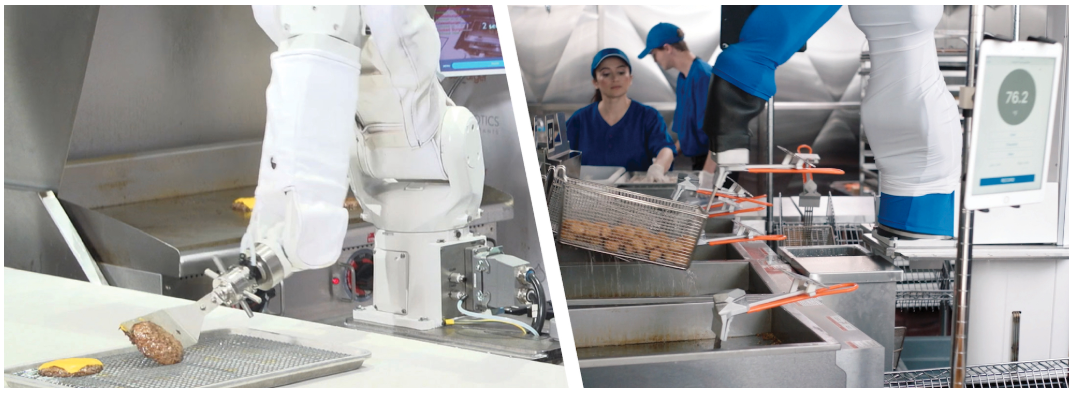Minimum-Wage Blowback – Fast Food Burger-Flipping Robot Works For $3 An Hour
Over the years, we’ve documented the proliferation of artificial intelligence and robots in the workplace would lead to a tidal wave of job losses through 2030.
What peaked our attention several years ago was Miso Robotics, a Pasadena tech company with the focus of developing robots for fast-food restaurants, has seen the price of its burger-flipping robot drop from $100,000 to $10,000 in four years.
“Off-the-shelf robot arms had plunged in price in recent years, from more than $100,000 in 2016, when Miso Robotics first launched, to less than $10,000 today, with cheaper models coming in the near future,” according to the Los Angeles Times.
The burger-flipping robot is now more cost-effective than the average low-skilled employee, which means Miso’s unveiling of a subscription plan for restaurants, of just $2,000 a month, with the choice of a robot that works either the grille or fryer, could be very appealing to restaurant owners or managers across the country who need to drive down labor costs.
“As a result, Miso can offer Flippys to fast-food restaurant owners for an estimated $2,000 per month on a subscription basis, breaking down to about $3 per hour. (The actual cost will depend on customers’ specific needs). A human doing the same job costs $4,000 to $10,000 or more a month, depending on a restaurant’s hours and the local minimum wage. And robots never call in sick,” LA Times adds.
Americans could soon see Flippy or a variant of the robot at a mom and pop restaurant or a major fast-food chain in the early 2020s, the affordability of these robots will entice restaurant operators to drive down labor costs.
On a much broader perspective, Karen Harris, Managing Director of Bain & Company’s Macro Trends Group, presented a fascinating report several years ago titled “Labor 2030: The Collision of Demographics, Automation, and Inequality,” which outlines how automation could eliminate upwards of 40 million jobs by the end of this decade.
Millions of Americans are employed in the fast-food industry; the proliferation of automation could lead to a rapid increase in job losses through the mid to late 2020s. The labor market could see major disruptions from robots in the years ahead, it’s expected this trend could force the government to have the Federal Reserve finance People’s Quantitative Easing, in the form of universal income, etc.
Tyler Durden
Thu, 03/05/2020 – 23:45
